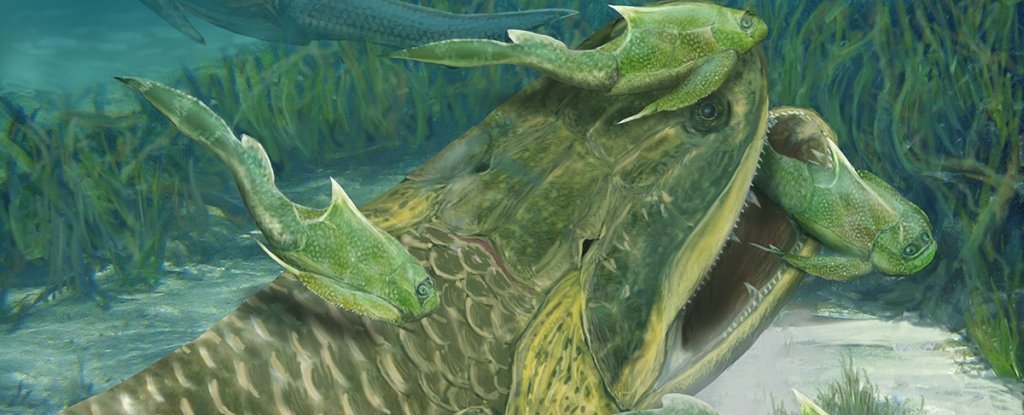here's something to be learned from every fossil, but now and then, a fossil is found that doesn't quite seem to fit. These are the exciting ones. Like Hongyu chowi, a newly described fish fossil that seems to imply that more species were evolving to live on land than we'd previously known.
Found in a quarry in northern China in 2002, understanding H. chowi could reframe the story of what happened when we emerged from the seas to evolve as land animals.
The story of how this happened is relatively well known. Roughly 360 million years ago in the Devonian Period, one group of a particular type of fish called lobe-finned fish, for their fleshy fins containing muscles and bones, evolved into tetrapods, or four-limbed animals.
These limbs can include wings and flippers, so every four-limbed animal that ever existed, including birds, turtles, seals, and us humans, are descended from these fish.
H. chowi is a 1.5-metre long lobe-finned fish that lived around 370 to 360 million years ago, and it has characteristics that make it hard to place phylogenetically.
It shares several characteristics with a group of predatory lobe-finned fish called rhizodonts, thought to have split with the tetrapod stem group before they evolved into limbed animals. Its size and some of the shapes of its bones are consistent with rhizodonts.
On the other hand, it also shares characteristics with another extinct group of lobe-finned fish, elpistostegids. These show similarities with early tetrapods, and H. chowi shares them; namely, the shoulder girdle and gill skeleton.
This could, the researchers said, indicate one of two things. The first is that H. chowi is a rhizodont that independently evolved tetrapodomorph characteristics.
The second is that some rhizodonts could be more closely related to elpistostegids and tetrapods than previously thought.
Whichever of the two it is, though, the conclusion is a significant one: The shared characteristics between separate groups are more substantial than we knew, increasing the parallels between rhizodonts, elpistostegids and tetrapods.
"In either case, the overall result reveals a substantial increase in homoplasy in the tetrapod stem group," the team writes in the study.
"It also suggests that ecological diversity and biogeographical provinciality in the tetrapod stem group have been underestimated."
H. chowi also seems to have some characteristics in common with neither group. Although the fossil's snout could not be found (it was excavated from an active quarry, and the snout had already been lost or destroyed), the bones around the jaw suggest that the fish lurked around on the seafloor, rapidly ambushing and snapping its jaws around its prey.
The research was published in the journal Nature Ecology & Evolution.Source: Science Alert

Comments
Post a Comment